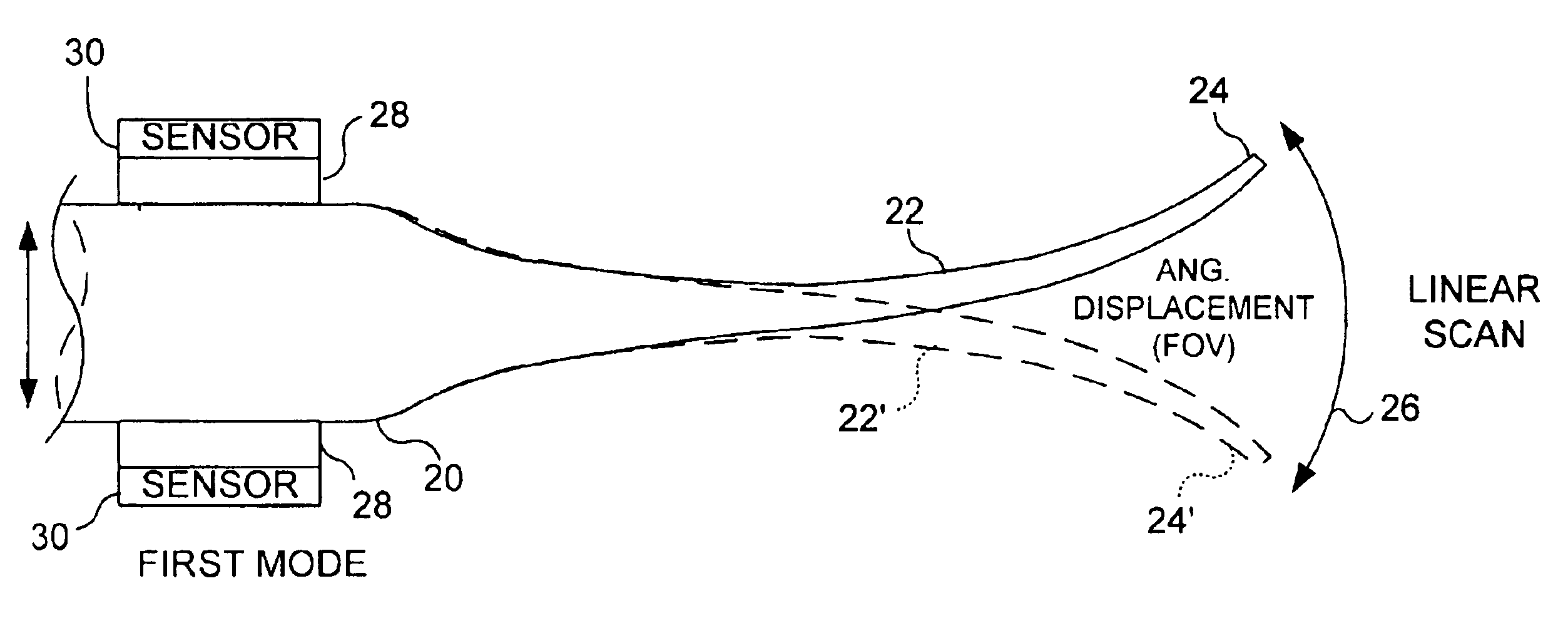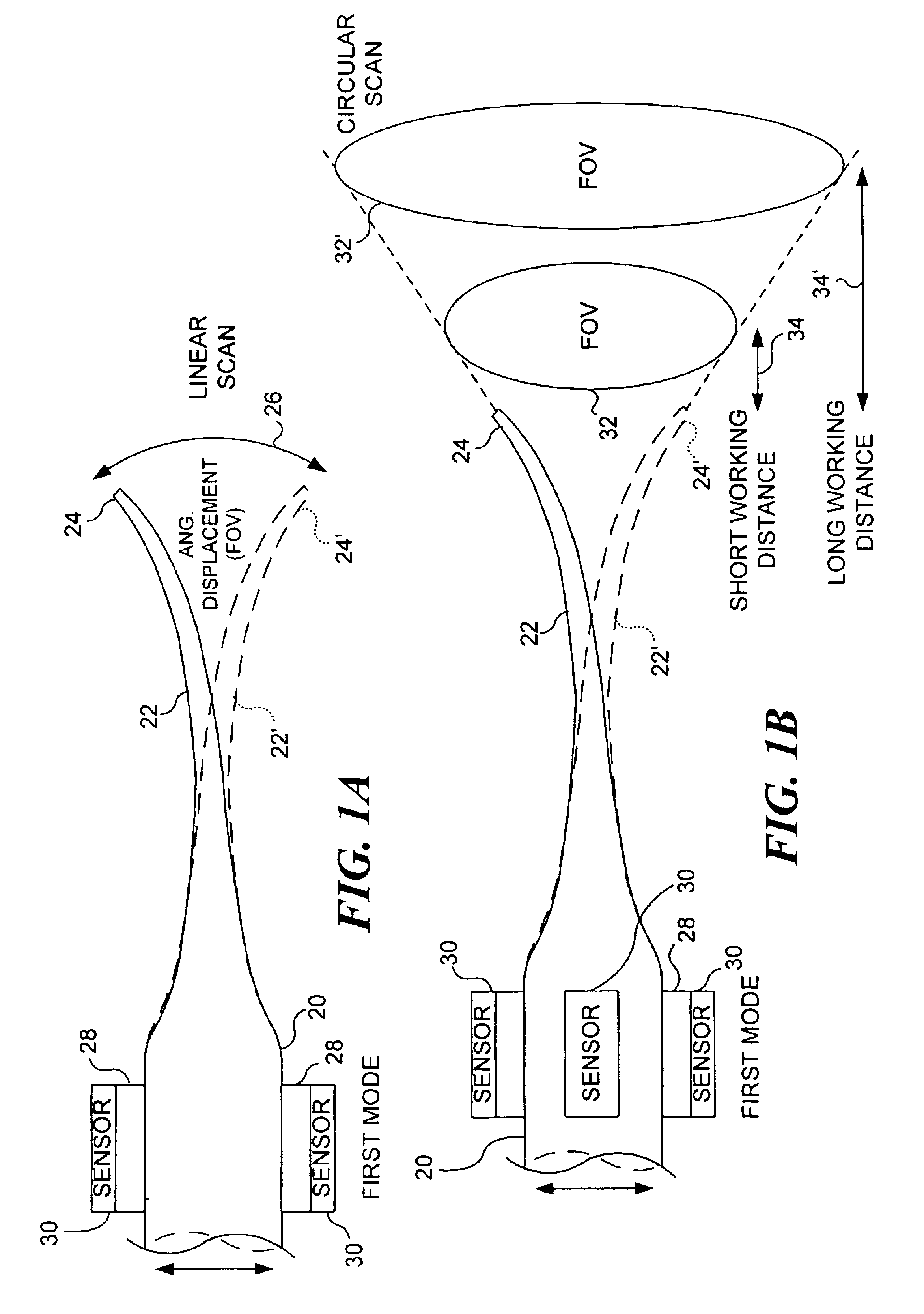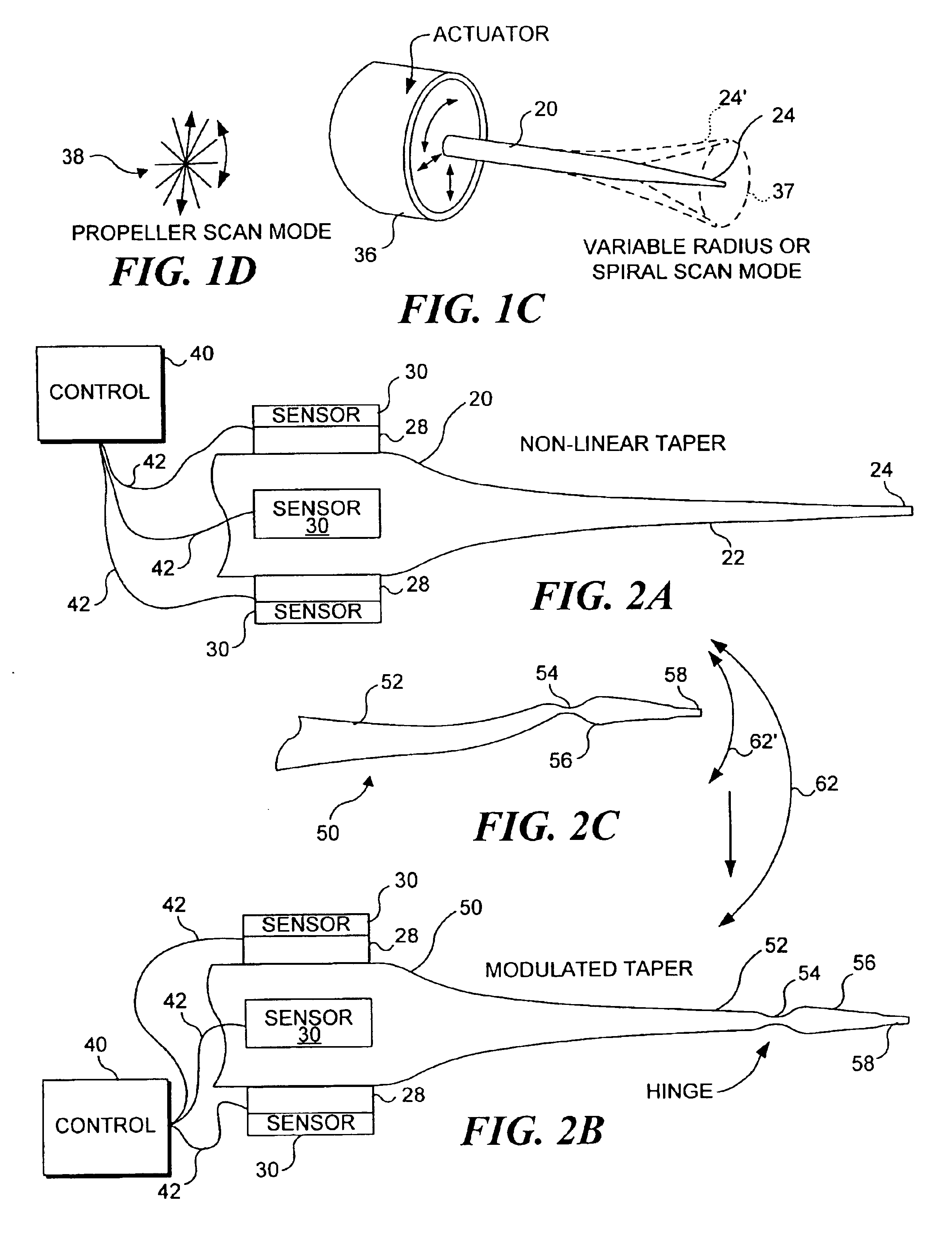Micro-fabricated optical waveguide for use in scanning fiber displays and scanned fiber image acquisition
a micro-fabricated, optical waveguide technology, applied in the direction of optics, optical light guides, instruments, etc., can solve the problems of mirror surface, degrading image quality, limiting the application of optical scanning for small size, etc., and achieve the effect of flattening the ar
- Summary
- Abstract
- Description
- Claims
- Application Information
AI Technical Summary
Benefits of technology
Problems solved by technology
Method used
Image
Examples
second embodiment
A second embodiment employs an optical source producing radiation at a wavelength not being used for the scanner application (e.g., infrared (IR) lasers or light emitting diodes (LEDs)) and matching IR detectors (IR photodiodes) to monitor the direction of the scanning waveguide. Sensors 30 in FIGS. 1A, 1B, 2A, and 2B correspond to these optical sensors in this embodiment. Details of exemplary sensors suitable for this purpose are disclosed in the priority parent patent application referenced above. Both the light sources and detectors are preferably made from diode material that can be positioned at either the distal or proximal end or the micro-fabricated fiber scanner. If the diode material is disposed at the proximal end, then the diodes will send and receive light to and from the distal tip using optical fibers running with the scanning optical waveguide. If disposed instead at the distal end, then the diodes may be positioned to detect an IR beam (or other waveband of light th...
PUM
 Login to View More
Login to View More Abstract
Description
Claims
Application Information
 Login to View More
Login to View More - R&D
- Intellectual Property
- Life Sciences
- Materials
- Tech Scout
- Unparalleled Data Quality
- Higher Quality Content
- 60% Fewer Hallucinations
Browse by: Latest US Patents, China's latest patents, Technical Efficacy Thesaurus, Application Domain, Technology Topic, Popular Technical Reports.
© 2025 PatSnap. All rights reserved.Legal|Privacy policy|Modern Slavery Act Transparency Statement|Sitemap|About US| Contact US: help@patsnap.com



